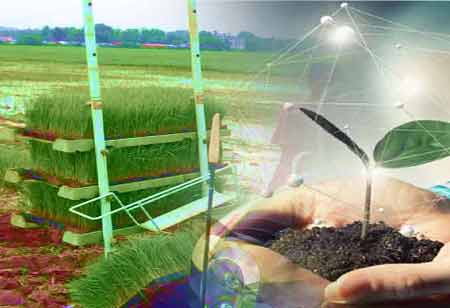Thank you for Subscribing to Agri Business Review Weekly Brief
Smart Water Management Using Innovative Technologies
The agriculture sector faces and contributes to water hazards due to climate change and the subsequent increase in catastrophic occurrences, such as floods and tropical storms, droughts, and diminished groundwater reserves.

By
Agri Business Review | Thursday, December 29, 2022
Stay ahead of the industry with exclusive feature stories on the top companies, expert insights and the latest news delivered straight to your inbox. Subscribe today.
There have been numerous discussions about how the new technology can assist in resolving water efficiency issues in this industry as AI, in particular, makes progress in agriculture to improve productivity and resource management.
FREMONT, CA: The agriculture sector faces and contributes to water hazards due to climate change and the subsequent increase in catastrophic occurrences, such as floods and tropical storms, droughts, and diminished groundwater reserves.
Creating an optimal irrigation scheduling and distribution: Overwatering and underwatering can harm crops or impede their growth; crops' quality depends on the right level of irrigation. A moist soil and a sufficient amount of humidity are also essential. To attain the desired yield and quality, farmers must still make a judgment call over how much water to apply. It is a lengthy, operationally demanding, and complicated procedure requiring high-quality, localized data inputs.
The future autonomous agriculture: Farmers are working to develop a better crop irrigation schedule. It will not only maximize production and quality but also keep water usage in check due to the increasing requirement to manage water efficiency issues in agriculture.
IoT sensors can be utilized in AI-based irrigation systems that can provide strategic insights into the best times to water crops and use fertilizers or pesticides, depending on the data type to be recorded soil, light, weather, and plant. Soil-based sensors are strategically placed across the field to gather pertinent data on salinity, volumetric water content, and other vital characteristics that may be used to estimate irrigation requirements in real-time and provide immediate insights into the demands of the soil.
Discovering irrigation malfunctioning: Optimized irrigation systems and the avoidance of overwatering are only two aspects of the fight to manage and conserve water in the agricultural sector. Farmers continue to be concerned about the ability to identify issues, such as leaks in irrigation systems, without doing a physical inspection.
As AI in agriculture gains strength, the irrigation system uses more linked devices, enabling the software to send an alert when something is off or suspicious. Since irrigation sensors can identify any anomaly in real-time and link it to the underlying problem, farmers can act immediately.





